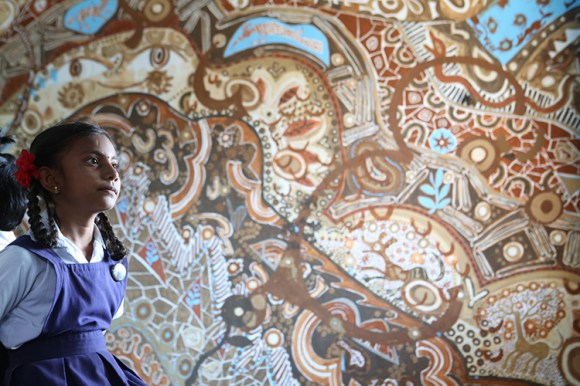
Each year, volunteer artists from Japan travel to one of the poorest regions of India to share their talents with schoolchildren at the Niranjaya Public Welfare School. They join local artists at the annual Wall Art Festival to collaborate with the students on amazing works of temporary art in their school.
With the help of donations (mainly from Japan, Australia and New Zealand) the building that houses the Niranjaya Public Welfare School was constructed in 2007. Here, any student can receive a free education (including study materials), regardless of gender, caste or religion. This is especially important in Bihar, which has the lowest literacy rate in India: only 47 percent. About 85 percent of the population lives in villages like Sujata, in which the school is located.
With uniforms, computers and textbooks to buy and 12 full time teachers’ salaries to pay, the initial donations were not enough to continue on—they needed a way to guarantee funds for the school. Part fundraising strategy, part educational enrichment, the Wall Art Festival was born. Each year volunteer artists from Japan are selected to visit the school and, along with local artists, lead the children in a school-wide art project. The white walls inside and out are transformed into works of art that are complex, expressive and wrap themselves around the figures and dreams of the students within.
Japanese artist Yusuke Asai has participated in the festival for three years and brings a unique approach to the project. Rather than buying paints, he led students to collect various kinds of soil from the village to use as paint. You might think it would make for a bland painting, but you would be wrong.
The intricate designs he meticulously daubed onto the walls cover even the ceiling and the bookshelves at the back of the room. He took traditional Indian art as his inspiration, so his mural is reminiscent of intricate henna patterns. The figures break out of their borders, stretching limbs out and over the heads of the occupants.
They added straw to the floor, softening the atmosphere.
There is so much detail here that you could stay for hours admiring each piece of the magnificent puzzle.
Not every artist stuck to such meditative aesthetics. Mythological figures explode out onto this wall on waves of blue.
Another artist changed the very shape of the room, covering every surface in designs and symbols that look like they could be ancient etchings or alien language.
Some pieces recall textile patterns…
…and some recall childhood storybooks and puppet shows.
Some pieces were modern and simple…
…but the impact is undeniable. This child looks as if he’s about to be sucked into a vortex!
Realistic depictions of places the children may never see are brought right to their classrooms…
…alongside dream-like landscapes imagined in serene colors.
Monochromatic paintings with simple elements tell stories…
…while the figures dance around the students.
The school’s facade is also transformed for the event.
Even this elephant’s skin became a canvas!
Above all, this is an incredible coming-together of people. Across divides of class, culture and language, people gave of themselves and created a wonderful experience together. Undoubtedly, the participants walk away with an appreciation for art and education, but also for the good that exists in others.
It looks like an incredible experience for hosts and visitors alike.
Once the festival is over, the murals are all removed and the walls are returned to their original white. The excitement is over for now, but the donations delivered to the school fund another year of lessons and the experience lives on in the minds of all who participated.
Sources: Amusing Planet, Niranjaya Public Welfare Trust
Images: Wall Art Festival

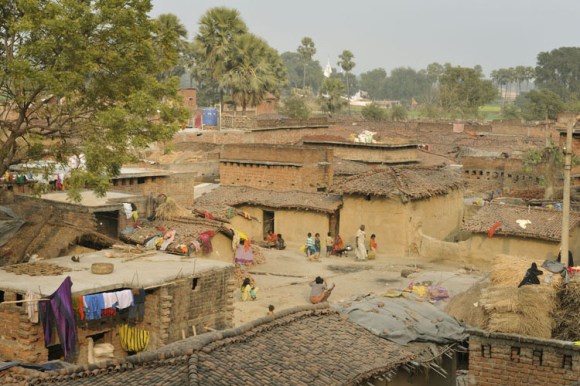

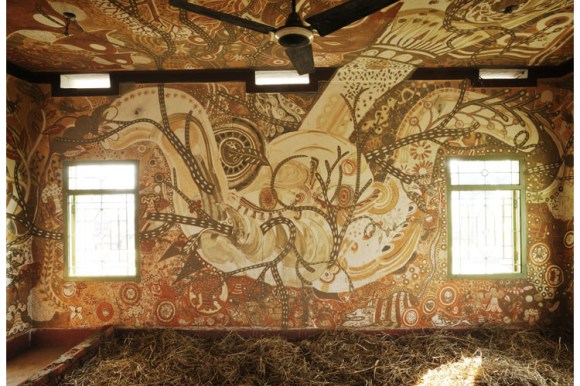
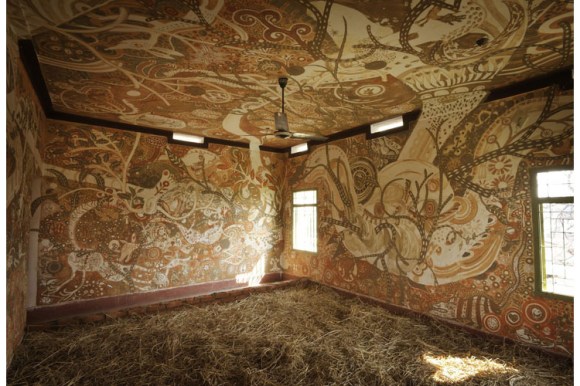
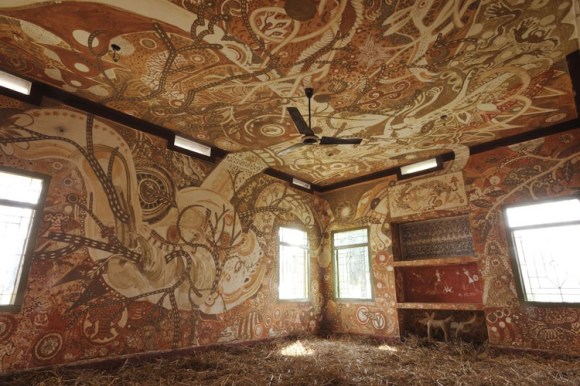
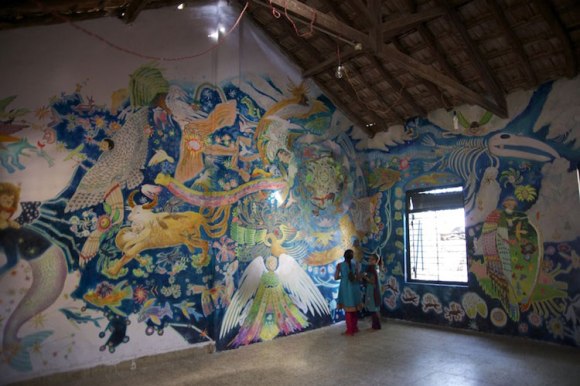
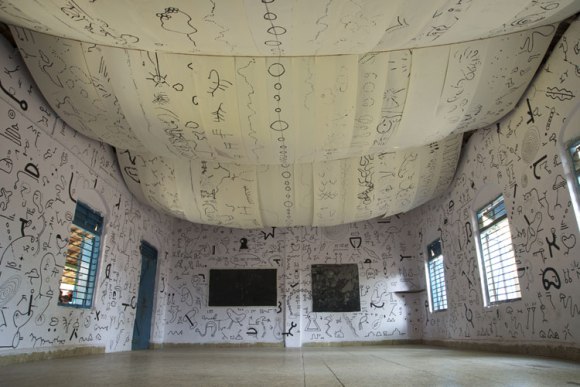
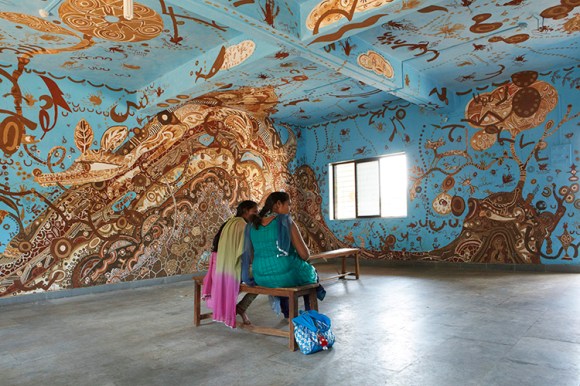
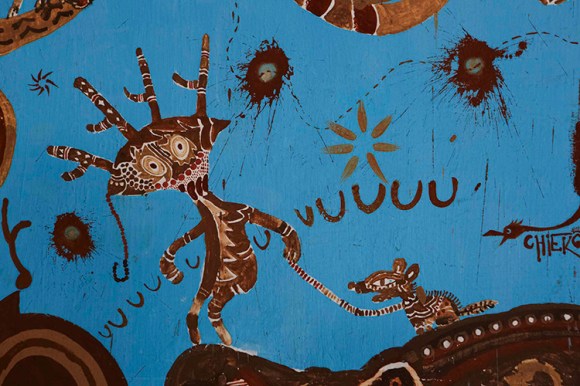
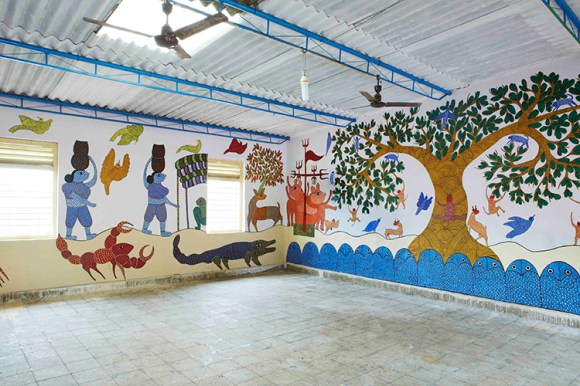
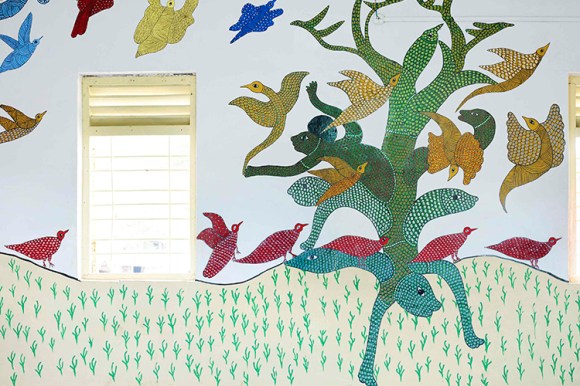
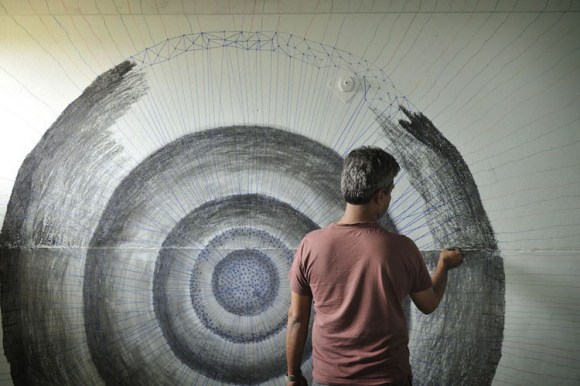
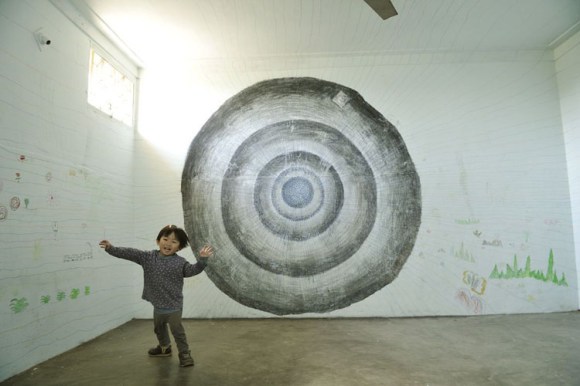
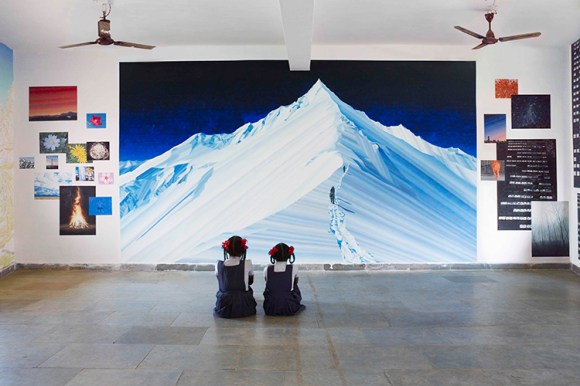
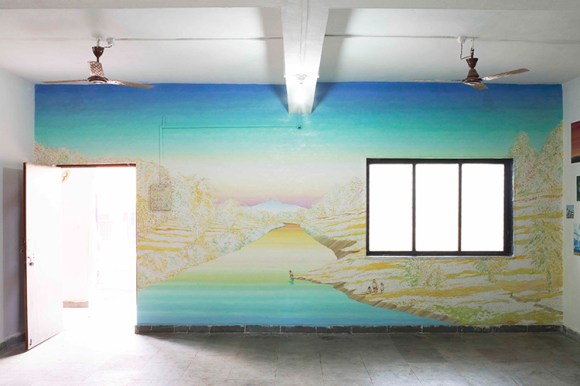
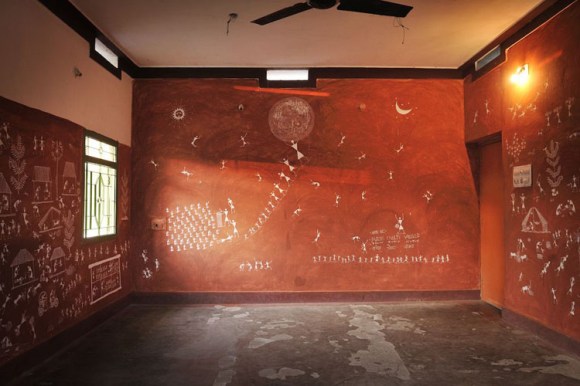
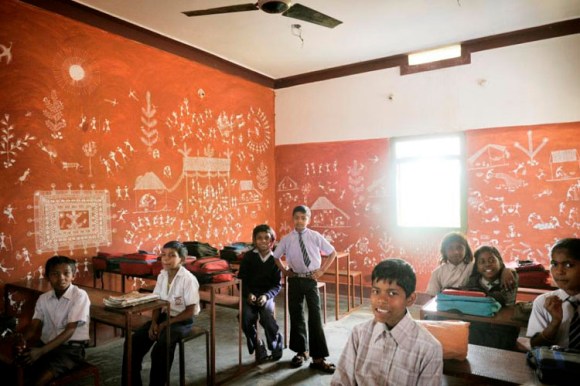
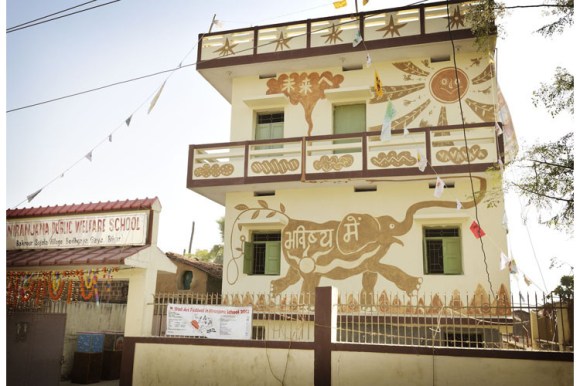
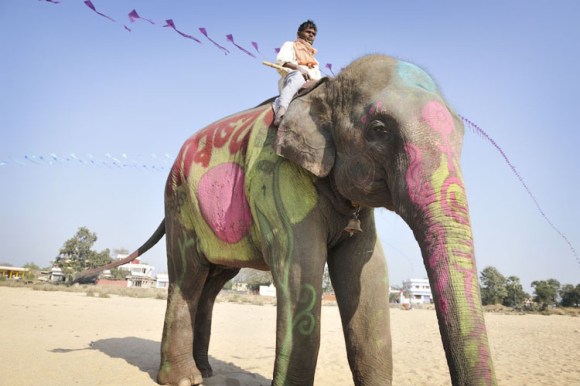

 The awesome Nintendo and anime-inspired stairway art of Japanese high schools 【Photos】
The awesome Nintendo and anime-inspired stairway art of Japanese high schools 【Photos】 Hong Kong students use free time at school to draw stunning anime-inspired chalkboard art
Hong Kong students use free time at school to draw stunning anime-inspired chalkboard art Korean artist stuns with 3-hour Star Wars illustration merging the Force and feudal Japan【Video】
Korean artist stuns with 3-hour Star Wars illustration merging the Force and feudal Japan【Video】 Japan’s leading maker of giant cat heads needs your help!
Japan’s leading maker of giant cat heads needs your help! Stay at the unique Artist in Hotel and absorb some Japanese culture — through your hotel room!
Stay at the unique Artist in Hotel and absorb some Japanese culture — through your hotel room! Rakuten randomly offers 58 New Year’s osechi feasts in Japan, but did we get a star or a dud?
Rakuten randomly offers 58 New Year’s osechi feasts in Japan, but did we get a star or a dud? The Purple Lucky Bag from Village Vanguard is an extra-large waste of money
The Purple Lucky Bag from Village Vanguard is an extra-large waste of money Top Japanese cosplayer Enako returns to Comiket after 6 years, creates mayhem with admirers
Top Japanese cosplayer Enako returns to Comiket after 6 years, creates mayhem with admirers Should you dip your cake in sake? One Japanese brewer says no, but actually yes【 Taste test】
Should you dip your cake in sake? One Japanese brewer says no, but actually yes【 Taste test】 Private booths are coming to Japan’s Shinkansen bullet trains even sooner than we’d thought【Video】
Private booths are coming to Japan’s Shinkansen bullet trains even sooner than we’d thought【Video】 Japanese beef bowl chain Sukiya’s 2026 Smile Box lucky bag basically pays for itself
Japanese beef bowl chain Sukiya’s 2026 Smile Box lucky bag basically pays for itself Tokyo fish market breaks New Year auction record as single fish sells for over 5 million yen【Vid】
Tokyo fish market breaks New Year auction record as single fish sells for over 5 million yen【Vid】 New Japanese menstrual product seeks to help women spot unidentified iron deficiencies
New Japanese menstrual product seeks to help women spot unidentified iron deficiencies Tokyo event lets you travel back in time, for free, to celebrate 100 years since Showa era start
Tokyo event lets you travel back in time, for free, to celebrate 100 years since Showa era start Are you a control freak, baby, or tough guy? Find out what your sleeping position says about you!
Are you a control freak, baby, or tough guy? Find out what your sleeping position says about you! Starbucks Japan ready to get Year of the Horse started with adorable drinkware and plushies【Pics】
Starbucks Japan ready to get Year of the Horse started with adorable drinkware and plushies【Pics】 Hayao Miyazaki says Happy New Year to Studio Ghibli fans with new art for Year of the Horse
Hayao Miyazaki says Happy New Year to Studio Ghibli fans with new art for Year of the Horse We found possibly the quietest Japanese-style hotel in Tokyo’s bustling Shinjuku district
We found possibly the quietest Japanese-style hotel in Tokyo’s bustling Shinjuku district Cup Noodle tries an authentic Jiro-style ramen, but something’s not quite right
Cup Noodle tries an authentic Jiro-style ramen, but something’s not quite right The best Starbucks Japan Frappuccinos we want to drink again in 2026
The best Starbucks Japan Frappuccinos we want to drink again in 2026 We revisited Sweets Paradise after a decade to see if Japan’s dessert buffet still delivers
We revisited Sweets Paradise after a decade to see if Japan’s dessert buffet still delivers That time Seiji called JASRAC to ask why he didn’t get paid royalties for his song being on TV
That time Seiji called JASRAC to ask why he didn’t get paid royalties for his song being on TV Japan’s oldest largetooth sawfish in captivity back on display in Mie Prefecture
Japan’s oldest largetooth sawfish in captivity back on display in Mie Prefecture Pizza Hut Japan’s hot lucky bags are perfect for a New Year’s pizza party
Pizza Hut Japan’s hot lucky bags are perfect for a New Year’s pizza party 7-Eleven Japan starts new temporary luggage storage service in over 300 branches
7-Eleven Japan starts new temporary luggage storage service in over 300 branches Disillusionment at Tsukiji’s tourist-target prices led us to a great ramen restaurant in Tokyo
Disillusionment at Tsukiji’s tourist-target prices led us to a great ramen restaurant in Tokyo Starbucks teams up with 166-year-old Kyoto doll maker for Year of the Horse decorations【Photos】
Starbucks teams up with 166-year-old Kyoto doll maker for Year of the Horse decorations【Photos】 Tokyo considering law requiring more trash cans following litter increase in heavily touristed area
Tokyo considering law requiring more trash cans following litter increase in heavily touristed area Tokyo’s Tsukiji sushi neighborhood asks tour groups to stay away for the rest of the month
Tokyo’s Tsukiji sushi neighborhood asks tour groups to stay away for the rest of the month Japan may add Japanese language proficiency, lifestyle classes to permanent foreign resident requirements
Japan may add Japanese language proficiency, lifestyle classes to permanent foreign resident requirements Sanrio theme park in Japan announces plans to expand into a Sanrio resort
Sanrio theme park in Japan announces plans to expand into a Sanrio resort Stamina-destroying “Paralysis Noodles” are Tokyo’s newest over-the-top ramen innovation
Stamina-destroying “Paralysis Noodles” are Tokyo’s newest over-the-top ramen innovation Survey asks foreign tourists what bothered them in Japan, more than half gave same answer
Survey asks foreign tourists what bothered them in Japan, more than half gave same answer Japan’s human washing machines will go on sale to general public, demos to be held in Tokyo
Japan’s human washing machines will go on sale to general public, demos to be held in Tokyo Japan’s deadliest food claims more victims, but why do people keep eating it for New Year’s?
Japan’s deadliest food claims more victims, but why do people keep eating it for New Year’s? We deeply regret going into this tunnel on our walk in the mountains of Japan
We deeply regret going into this tunnel on our walk in the mountains of Japan Studio Ghibli releases Kodama forest spirits from Princess Mononoke to light up your home
Studio Ghibli releases Kodama forest spirits from Princess Mononoke to light up your home Major Japanese hotel chain says reservations via overseas booking sites may not be valid
Major Japanese hotel chain says reservations via overseas booking sites may not be valid Put sesame oil in your coffee? Japanese maker says it’s the best way to start your day【Taste test】
Put sesame oil in your coffee? Japanese maker says it’s the best way to start your day【Taste test】 No more using real katana for tourism activities, Japan’s National Police Agency says
No more using real katana for tourism activities, Japan’s National Police Agency says Starbucks Japan reveals new sakura drinkware collection, inspired by evening cherry blossoms
Starbucks Japan reveals new sakura drinkware collection, inspired by evening cherry blossoms Updated cherry blossom forecast shows extra-long sakura season for Japan this year
Updated cherry blossom forecast shows extra-long sakura season for Japan this year We deeply regret spending five hours on this artistic Japanese island (we should have spent more)
We deeply regret spending five hours on this artistic Japanese island (we should have spent more) Budding Japanese student artists impress us with chalkboard works of art
Budding Japanese student artists impress us with chalkboard works of art
Leave a Reply